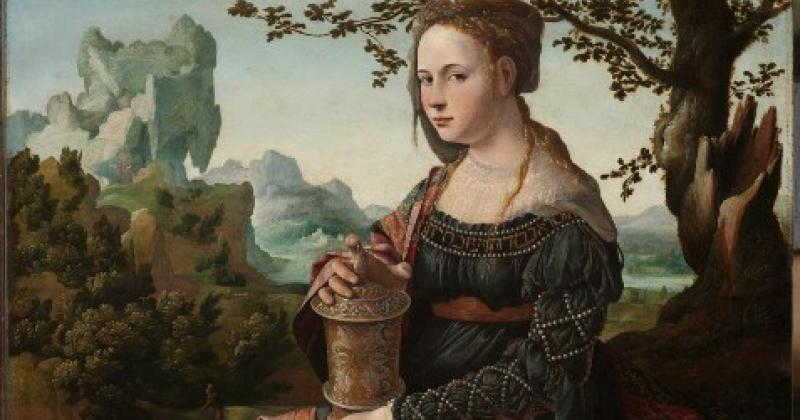In the Roman missal the saint is commemorated with an obligatory memorial, now Francis has raised the celebration to the dignity of a feast day that celebrates the apostles, in order to underline the importance of the first testimony of the resurrection and the role of women in evangelisation. The feast day will still be celebrated on 22 July.
As per Francis’ wishes, the Congregation for Divine Worship has issued a decree signed by Cardinal Robert Sarah, raising the celebration of the memorial of St. Mary Magdalene to a feast day. The document is dated 3 June, the solemnity of the Sacred Heart of Jesus. This decision, explains the dicastery’s Secretary, Archbishop Arthur Roche, “is part of the current ecclesial context which calls for a deeper reflection on the dignity of women, the New Evangelisation, and the greatness of the mystery of Divine Mercy”.
It was John Paul II, Roche recalled, “who focused a great deal not just on the importance of women in Christ and the Church’s mission but also gave special emphasis to the unique Role played by Mary Magdalene, the first witness to see the Risen Jesus and the first messenger who announced the resurrection of the Lord to the apostles. She is still important in today’s Church – as demonstrated by the current efforts to promote the new evangelisation – which wants to welcome men and women of every race, ethnic group, language and nationality without distinction, to announce the good news of the Gospel to them.” Thus, St. Mary Magdalene is presented as an example of a “true and authentic evangeliser” who announces “the joyous core message of Easter”.
The Pope took this decision during the Jubilee of Mercy, Mgr. Roche said, “to highlight the importance of this woman, who showed such great love for Christ and was much loved by Christ”. Mary Magdalene was among Jesus’ disciples, she followed him all the way to the foot of the cross and in the garden where the tomb was. She was the first witness of the resurrection, “testis divinae misericordiae”, as Gregory the Great refers to her. John’s Gospel describes her in tears because she discovered that the Lord’s body was missing from the tomb: “Jesus,” Mgr. Roche explained, “had mercy on her, presenting himself as Master and transforming her tears into paschal joy”.
“Christ,” the archbishop went on to say, “shows a special respect and mercy towards this woman, who manifests her love for Him, searching for Him in the garden with a sense of anxiety and suffering,” with “tears of humility as St. Anselm describes them. St. Thomas calls her “apostle of the apostles” because it is she who announces to the fearful disciples locked inside the cenacle what they in turn must proclaim to the world.
“It is only right therefore, that the liturgical celebration of this woman should be celebrated at the same level as the apostles in the General Roman Calendar and that it should highlight the special mission of this who is an example and a model for every woman in the Church to follow.”
Tradition, Cardinal Gianfranco Ravasi wrote “which has repeated itself a thousand times throughout the history of art and still endures today, has made of Mary a prostitute. This only happened because the previous page of the Gospel – chapter 7 of Luke’s Gospel – describes the conversion of an anonymous famous sinner in that city, the one who poured perfume on Jesus’ feet, was a guest in the house of a well-known Pharisee, wet them with her tears and dried them with her hair. It was thus that, even in the absence of any textual evidence, Mary Magdalene came to be identified with that nameless prostitute. Another Mary, sister of Martha and Lazarus would venerate Jesus with the same gesture on a different occasion (John 12:1-8). Thus, another misinterpretation arose in relation to Mary Magdalene : some popular traditions identified her as Mary of Bethany after she was confused with the prostitute from Galilee.”
